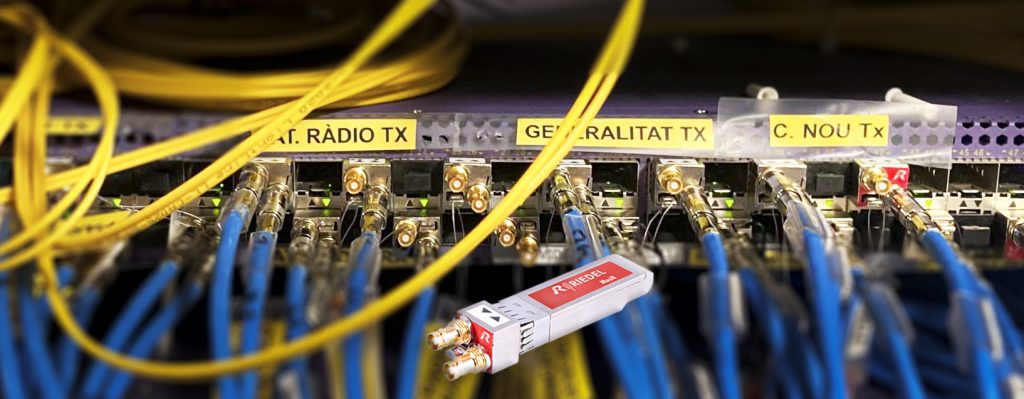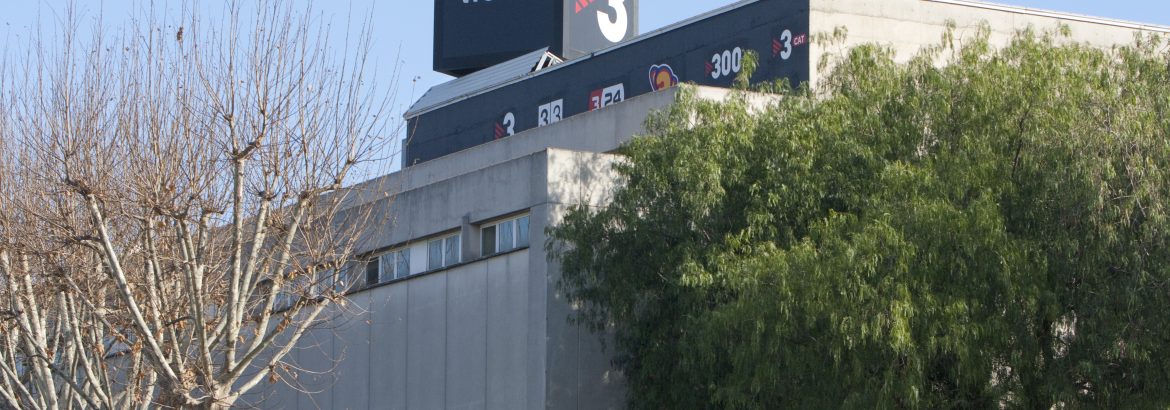CROSSPOINT helps TV3 transition from SDI to IP using RIEDEL solutions for video contribution from different locations. The key nodes involved are the TV3 studios, the Generalitat de Catalunya, the Parlament de Catalunya, Catalunya Ràdio, and Camp Nou.
The technology of Embrionix (now Riedel Mediornet IP) replaces an obsolete proprietary solution that transported baseband video over dark fiber. Currently, 2022/06 is used, with some signals redundantly transmitted using 2022/7. Embrionix (Mediornet-IP) allows adaptation without workflow changes, maintaining quality while utilizing future-proof technology.
Toni Comerma, Head of Infrastructure and Communications at SECA, comments, “These are services that have been in production for more than 20 years and are managed by our highly specialized technical team. With Embrionix we started testing in 2016 and discovered that it allows very flexible configuration. No two sites have the same configuration, and this solution enables us to adapt to our needs. Additionally, it does not require a significant up-front investment and has very high density, as it only requires the physical space of the communication switch.”
The Embrionix SFPs, now Mediornet-IP, are used on the switching infrastructure of Extreme Networks X620 16-port in remote locations and two X670 48-port in TV3 studios. These switches were chosen as they fit perfectly into the existing network, although they are not a solution that allows evolution towards 2110 because they do not support PTPv2 and are not supported by standard orchestrators.

This project began in 2019, and for the Parlament de Catalunya location, TV3 was clear that, being their first experience in uncompressed video production, they needed a simple and reliable solution that preserved their existing workflows. This priority revealed SMPTE 2022/6 as the preferred option since it is easier to manage and equivalent to the existing solution. Moreover, since they are transporting contribution signals between two SDI environments, the advantages of 2120 would not be utilized and would add significant complexity to the project.
A solution with future potential for signal contribution
The 2022/6 solution for contribution demands bandwidth that, in many cases, is an unattainable luxury. The Catalan public broadcaster has had an active dark fiber infrastructure for many years, which is rare and gives them the opportunity to work with high-capacity bandwidth. However, it is common to work with compressed signals, as they already do in many locations. Compression will play a crucial role, even in production, and soon we will see how 2110/22 contributes to the widespread adoption of IP technology, reducing network requirements and, consequently, costs.
Looking towards the future, the Corporació Catalana de Mitjans Audiovisuals is considering different options, depending on the application, to complement SDI/SMPTE 2110, such as SRT for contribution over the internet or NDI as an alternative for production.
Toni Comerma comments that the most important thing is to identify the need. “Not all contributions will be made using SRT. It is a good solution for the internet, but on dedicated lines, it may not be necessary. The same goes for NDI: it is a great tool, but it has its limitations and cannot be considered a universal solution for production, just as SMPTE 2110 probably should not be considered a universal solution for all cases. They will coexist, and depending on the need, one or the other will be chosen.”
A necessary migration for the future of audiovisual
It is already a reality that the entire audiovisual industry is migrating to IP. SDI is no longer recommended as a medium- or long-term investment. Leveraging its experience as an OEM SFP manufacturer for the broadcast industry, Embrionix was a pioneer in proposing IP solutions since 2010, even before the SMPTE standard was developed. Now fully integrated into Riedel’s portfolio, in this migration, solutions such as SDI-to-IP and IP-to-HDMI gateways will be fundamental, as they can reduce installation costs and drastically minimize equipment volume.

